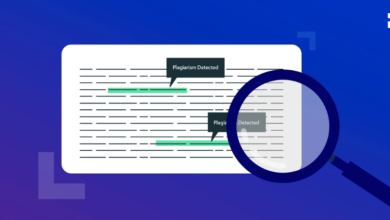Top Trends of B2B Ecommerce SEO That You Need to Know in 2025

Search engine optimization (SEO) is no longer optional for B2B ecommerce brands it’s a necessity. As competition continues to grow and buyer behavior shifts towards online research and digital decision-making, SEO has become one of the most powerful tools to drive long-term visibility, credibility, and leads. In 2025, B2B buyers are more informed, selective, and digital-savvy than ever before, which means your ecommerce presence needs to be optimized not just for search engines, but also for user intent.
This blog explores the top trends in B2B ecommerce SEO that every business, marketer, and digital strategist needs to understand and act on. From artificial intelligence to zero-click searches, we’ll break down the most relevant strategies and offer tips to stay ahead in a rapidly changing digital environment.
1. AI-Powered SEO Strategies Are Reshaping B2B Ecommerce
Artificial intelligence has been steadily influencing SEO, but in 2025, it’s becoming foundational. Search engines like Google are using AI-based models (such as BERT and MUM) to understand search intent more deeply than ever before. This has major implications for how B2B businesses should approach content creation and optimization.
Tips for Using AI to Your Advantage:
- Focus on user intent, not just keywords. Understand the “why” behind searches and build content that answers those needs.
- Use AI-driven tools like Surfer SEO, Clearscope, or MarketMuse to analyze and optimize content.
- Implement structured data (schema markup) to help AI and search engines better understand your pages and rank them accurately.
Example: If you’re offering industrial automation solutions, your content should reflect not just the product but its impact like “how automated systems reduce manufacturing downtime.” AI understands these relationships and ranks helpful, specific content higher.
2. The Rise of Zero-Click Searches and Featured Snippets
In 2025, more than half of all Google searches end without a click. This is because Google increasingly provides direct answers via featured snippets, knowledge panels, and People Also Ask boxes. For B2B ecommerce, this means optimizing for visibility even when clicks don’t happen.
How to Optimize for Zero-Click SERPs:
- Use question-based headings like “What is an industrial supply chain management platform?”
- Format content with concise answers, bullet points, or tables.
- Ensure your site includes FAQ sections, which are often picked up by Google’s featured snippets.
This approach boosts brand awareness and thought leadership two key goals for B2B marketers, even when traffic isn’t directly driven to the site.
3. Voice Search Optimization for B2B Is Gaining Momentum
With more professionals using voice-enabled devices to conduct quick searches, voice SEO is becoming critical in B2B sectors. Voice queries tend to be longer, more conversational, and question-based, which changes how you should structure your content.
Voice Search SEO Best Practices:
- Use natural language in your content and headings.
- Target long-tail keywords and question phrases (e.g., “How do I choose a secure cloud storage solution for my business?”).
- Optimize for local and mobile experiences where relevant.
By adapting to this trend, your business can be more discoverable in voice searches that occur in offices, mobile settings, or even during meetings.
See also: Smart Security for Smart Homes: Integrating Technology into Modern Home Security
4. Personalized Content and Intent Targeting
One-size-fits-all content no longer works especially in B2B ecommerce SEO where buying cycles are complex and decision-makers vary. In 2025, successful SEO strategies prioritize personalized content experiences based on buyer intent and lifecycle stage.
How to Create SEO-Friendly Personalized Content:
- Segment your content strategy by buyer persona (e.g., IT managers vs. procurement officers).
- Use dynamic content blocks that change based on user behavior or location.
- Align content with intent-focused keywords, such as:
- Informational: “What is CRM integration?”
- Navigational: “Best CRM for mid-size B2B companies”
- Transactional: “Buy CRM integration software”
- Informational: “What is CRM integration?”
This level of intent mapping ensures that your content meets buyers where they are, driving higher engagement and conversions.
5. Video Content Optimization for Search Engines
Video is no longer a “nice to have” in B2B it’s essential. Search engines prioritize video-rich results, and platforms like YouTube are used as search engines themselves. In 2025, B2B brands that invest in SEO-optimized video are seeing higher visibility and stronger engagement.
Tips to Optimize Video for SEO:
- Include target keywords in titles, descriptions, and tags.
- Add transcripts and captions to improve accessibility and indexability.
- Embed videos on key landing pages to improve dwell time and user interaction.
Example: A B2B software company might create demo videos for each product feature. By optimizing these with keywords like “How to automate invoice processing,” they can drive traffic directly from YouTube and SERPs.
6. Core Web Vitals and User Experience Still Matter
Google’s algorithm continues to prioritize user experience metrics known as Core Web Vitals. These include loading speed, interactivity, and visual stability. In 2025, they’re even more important as part of the overall SEO score.
Improve Core Web Vitals with These Steps:
- Compress images and use lazy loading to boost load speed.
- Minimize JavaScript and unnecessary plugins.
- Ensure your site is mobile-responsive and easy to navigate.
When looking for affordable local SEO services, ensure the provider includes technical audits and UX optimization, not just content work. These technical improvements make a significant difference in search visibility and user retention.
7. E-A-T: Expertise, Authoritativeness, and Trustworthiness
Google continues to assess content quality based on E-A-T, especially for B2B niches like finance, healthcare, and technology. In 2025, having expert-backed, authoritative content is no longer optional it’s expected.
Ways to Build E-A-T for Your B2B Site:
- Publish content from industry experts or include bylines from real professionals.
- Get backlinks from reputable industry sources or partners.
- Include trust signals like client testimonials, case studies, and certifications.
E-A-T impacts rankings significantly, particularly in competitive B2B ecommerce sectors where trust is a deciding factor for enterprise buyers.
8. Mobile-First and Multichannel SEO Strategies
With professionals using smartphones, tablets, and even smartwatches to conduct business research, your SEO must span multiple platforms and devices.
Mobile SEO Checklist:
- Make sure your ecommerce site is fully responsive.
- Use mobile-friendly fonts, navigation, and calls to action.
- Test regularly using tools like Google’s Mobile-Friendly Test.
Also, integrate your SEO efforts across channels website, YouTube, LinkedIn, even podcasts. A multichannel approach helps strengthen your overall presence, especially for complex B2B sales journeys.
9. Content Refreshing and Evergreen Strategy
SEO is not just about creating new content it’s also about maintaining existing assets. In 2025, updating and repurposing older high-performing content is a smart and sustainable SEO strategy.
Refreshing Content for Better SEO:
- Update statistics, examples, and product details.
- Add internal links to newer content and improve readability.
- Re-optimize for current search intent and keywords.
This not only boosts rankings but also extends the shelf life of your top-performing B2B content pieces.
10. Local SEO Is Not Just for B2C
Even in B2B ecommerce, local search plays a role especially for service-based businesses, manufacturers, or distributors with physical locations. Appearing in local search can lead to high-quality leads from nearby businesses or partnerships.
When seeking affordable local SEO services, ensure they understand your niche, include Google Business Profile optimization, local citations, and regional content strategies. This is particularly effective for businesses with sales reps, warehouses, or consulting offices across different regions.
Conclusion: Stay Ahead by Adapting Early
B2B ecommerce SEO in 2025 is all about precision, personalization, and adaptability. The search landscape continues to evolve with smarter algorithms, changing user behaviors, and new content formats. To stay competitive, B2B brands must embrace these trends and integrate them into their digital strategy early.
Whether you’re refining your content strategy, exploring video SEO, or partnering with specialists for technical improvements, the key is to remain focused on your audience’s needs and search intent. The businesses that succeed will be those that treat SEO not as a one-time project, but as an ongoing, data-driven effort to deliver value and relevance at every stage of the buyer journey.
By understanding and acting on the trends outlined in this post, you’ll be better positioned to improve visibility, build authority, and convert searchers into long-term clients in 2025 and beyond.







